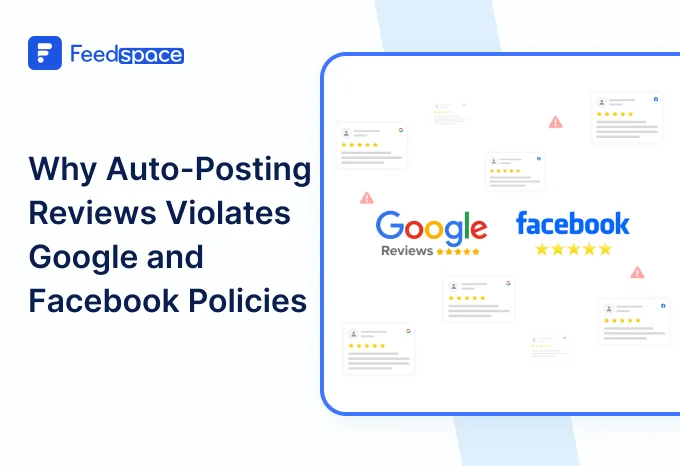Constructive feedback is a type of feedback that is given to highlight areas of improvement while simultaneously offering constructive suggestions to reach a positive outcome. It’s different from constructive criticism because it doesn’t just aim to point out a problem, but actually solves it.
In fact, it is a way to help others understand their mistakes and areas of improvement in a manner that doesn’t offend but encourages them to learn where they need to improve.
Giving constructive feedback involves actionable advice and solution-based suggestions, managers can build trust and develop healthy relationships with their teammates in the workplace. When given properly, constructive feedback is indeed an effective tool for driving change, bringing growth, and improving the quality of work.
In this blog, we will explore what constructive feedback actually is, why it matters, and how to give someone feedback effectively.
To understand this better, we have provided 50 constructive feedback examples along with helpful tips so that you can improve your communication style, boost team performance, and establish a culture of learning and improvement within your team. Whether you’re a manager, colleague, or simply someone looking to grow, this guide is your blueprint for mastering the art of giving constructive feedback.
What is Constructive Feedback?

To define constructive feedback, we can state that it is a type of feedback that provides specific, actionable suggestions aimed at helping someone improve their performance, behavior, or work. It focuses on solutions rather than just pointing out problems and is delivered in a respectful, supportive manner to encourage growth and learning. In simple words, constructive feedback is the secret ingredient for professional growth. It’s more than just pointing out what’s wrong—it’s about offering clear, actionable insights that lead to improvement or growth.
The idea behind providing constructive feedback is that it hones in on specific actions or behaviors that can be improved, helping individuals make meaningful progress. When giving feedback, being polite but firm is key. A study from Harvard Business Review shows that more than half of employees 57% actually want to know how they can improve, rather than just receiving praise. As Frank A. Clark put it,
“Criticism, like rain, should be gentle enough to nourish a man’s growth without destroying his roots.”
When delivered right, giving constructive feedback fuels growth and success.
Importance of Constructive Feedback
Gallup’s research shows that employees who regularly receive feedback from their manager are 3.6 times more likely to get motivated to do outstanding work. Constructive feedback drives performance, strengthens relationships, and fosters a culture of continuous learning. Companies that embrace regular feedback see remarkable results—like a 39% boost in employee engagement, according to the Corporate Executive Board.

The power of constructive feedback lies in its ability to:
- Build trust and open communication channels
- Foster continuous improvement and learning
- Enhance team performance and collaboration
- Spark innovation and problem-solving
Best Practices for Delivering Constructive Feedback

- Be Specific and Clear
Vague feedback is not at all helpful. It’s confusing and often ineffective. Specificity cuts through the noise.
For example, instead of saying, “You need to manage your time better,” You could be precise and say: “I noticed you missed the deadline for the report. Breaking down your tasks into smaller steps could help you stay on track.”
Alternatively, here’s another example of constructive feedback–instead of saying, “The beginning of this draft is boring. It needs more. You should be able to do better.”, you could say, “Let’s consider reworking the introduction, make it catchy. You can also focus more on the x section. Add an example here.”
Specific examples make your feedback clear and powerful.
- Make It Actionable
When you give feedback, make sure that it comes with a solution. Feedback that doesn’t come with a game plan is like a map with no directions—it won’t take anyone anywhere.
Research shows employees are 30% more likely to act on feedback when it includes clear, actionable steps. Along with pointing out what’s wrong, offer a solution.
For instance, say, “Instead of sending one long email with a massive to-do list, try breaking it into smaller, more manageable tasks.”
Instead of saying,”This looks messy and disorganized. Fix it.”, you could say,”Let’s fix the layout. We can make it less cluttered by doing x. Consider using brand colours to match our website layout. I believe using muted colours will do the trick.”
- Balance Positives with Constructive Criticism
Feedback should never feel like a one-sided critique, rather it’s a two way street. It’s a conversation. Always balance the positives with areas for improvement.
Start with what’s working, then address what needs fixing and finally, wrap up with another achievement. This sandwich method ensures that you are able to address all shortcomings while ensuring that the receiver feels motivated to fix them.
This helps create a space of encouragement rather than discouragement.
In particular, consider outlining the positives and the negatives, such as, ”This looks very well researched. I believe it can be made better by using data from x source. You can even segregate x data into different columns. Consider adding a brief summary here to illustrate your point better. Overall, it’ll have a much stronger impact, don’t you think?”
As Maya Angelou said, “People will forget what you said, people will forget what you did, but people will never forget how you made them feel.”
- Provide Timely Feedback
Timing is everything. Whether you’re on the giving end or the receiving end of feedback, it is extremely crucial to ensure that feedback is provided at the right time.
The best time to ask for feedback is when your work is 50-60% done, says Dan Heath, author of Upstream. Depending on the kind of feedback, you must determine the right time to give it.
For instance, in customer-related feedback requests, the best time is to ask a day or two after the customer has received the service.
Don’t say, “Let us know if you got any feedback!”
Say, “We enjoyed working with you–thanks again for partnering with us. I’d love to hear your thoughts about how this went. Was there anything you particularly liked or want us to improve upon? Your input would help us improve going forward.”
On the other hand, if you want to give feedback to an employee, the right time might be in between two projects.
This way, you can ensure that the employee has the opportunity for improvement, while also having the right example of their error to look back on.
Here’s an example: “Great work on the last project. You did well with our clients and they were thoroughly impressed. Before you begin the next project, I have a quick suggestion on one area of improvement. You should add another layer of data to this presentation. It will allow you to leverage so and so data. Let me know if you’d like more help with this.”
- Focus on Behavior, Not the Person
It’s not about attacking the individual—it’s about tackling the behavior. Constructive feedback should address actions and behaviors, not personal traits.
For example, instead of saying, “You’re always late,” try, “When you’re late, it disrupts the team’s schedule. Planning your time better could help you stay on track.” This approach lowers defensiveness and makes the feedback more likely to be received well.
Alternatively, if you witness an employee having issues, try something like, “I noticed you’re lagging behind on your tasks. Is there any bottleneck? Something that needs to be resolved? Don’t hesitate to reach out, I’m happy to help.”
✍️ Note: Maintain a Supportive Tone < put this in a different font, or put in a box similar to a quote. It needs to be highlighted >
Feedback should inspire, not demoralize. A supportive tone can open up more honest, productive conversations.
- Be Solution-Oriented
Merely pointing out what’s wrong doesn’t solve anything. The goal is to provide solutions.
Instead of saying, “This project is poorly organized,” suggest, “Next time, use a project management tool to keep tasks organized.” Providing solutions makes the feedback actionable and drives real improvements.
Or, don’t say, “This is vague. How am I supposed to understand this?”, suggest,” I believe there’s a better way to put this down for easier understanding. Perhaps you could put it in bullet points or break it down into smaller chunks for easy understanding. You can try that in the next update.”
- Foster a Growth Mindset
Constructive feedback is a gateway to growth, not perfection. It should inspire development and self-improvement.
Help the recipient see how they can refine their skills over time. As Carol Dweck’s research shows, “In a growth mindset, challenges are exciting, not threatening. They are opportunities to grow and get better.” This is the mindset you want to cultivate.
35 Constructive Feedback Examples for Workplace Challenges
Constructive feedback works when it is actionable and specific. To understand this better we have compiled 35 real life examples of constructive feedback that covers some of the common workplace challenges and provide practical ways to address them while maintaining trust and respect.

1. Time Management
Example Feedback –
“You’re finishing projects early—awesome! But, some quality checks have slipped through the cracks. Let’s figure out how to keep that speed while tightening up on precision.”
Why it’s constructive:
This feedback celebrates quick work, yet addresses areas needing attention, suggesting a plan to improve both speed and quality.
2. Team Collaboration
Example Feedback –
“Your ideas in meetings are bold—seriously, they stand out! But, some quieter voices aren’t getting heard. How about encouraging input from everyone?”
Why it’s constructive:
Recognizes creativity, while encouraging a more inclusive approach to teamwork with actionable advice.
3. Leadership Skills
Example Feedback –
“Your team’s consistent on-time deliveries is impressive! But I’m noticing a lot of stress. Maybe weekly check-ins could help ease that tension?”
Why it’s constructive:
Highlights strong results but also looks out for team well-being, offering a smart solution to reduce stress.
4. Problem-Solving Skills
Example Feedback –
“You catch problems fast—super valuable! But rushing to solutions might overlook key perspectives. Try involving others before making decisions.”
Why it’s constructive:
Appreciates quick problem identification, while promoting broader collaboration for better solutions.
5. Missed Deadlines Feedback
Example Feedback –
“Your work is top-notch, but I’ve noticed a few delays lately. Let’s break the next project into smaller steps to avoid that.”
Why it’s constructive:
Balances praise with a practical approach to tackle delays, making it easier to stay on track.
6. Task Prioritization Feedback
Example Feedback –
“You’re great at juggling tasks, but some important ones have slipped. Let’s try using a priority matrix to stay focused on what matters.”
Why it’s constructive:
Praises multitasking, while suggesting a simple tool for improvement.
7. Helping Colleagues Feedback
Example Feedback –
“You’re always there to help, which is amazing! But, it’s affecting your deadlines. Let’s set some boundaries to stay on top of both.”
Why it’s constructive:
Appreciates the willingness to help, yet guides the person to manage their own workload more effectively.
8. Quality of Work
Example Feedback –
“Your data analysis is spot-on—fantastic work! For the next level, consider improving the format to make it even more impactful.”
Why it’s constructive:
Recognizes the quality of work while nudging toward better presentation for greater impact.
9. Work Efficiency and Output
Example Feedback –
“Your output is impressive, no doubt, but the error rate has increased. Let’s add a quick quality check to keep the volume high and errors low.”
Why it’s constructive:
Celebrates productivity, while stressing the importance of quality control.
10. Task Delegation
Example Feedback –
“You’re incredibly reliable, but delegating could lighten your load. Here’s a simple framework to start sharing tasks.”
Why it’s constructive:
Commends self-reliance, while gently encouraging leadership and task delegation.
11. Decision-Making
Example Feedback –
“Your decisions are thoughtful, which is awesome! But sometimes they take a bit too long. Try applying the 80/20 rule to speed up the process.”
Why it’s constructive:
Acknowledges the strength of careful decisions but encourages quicker action with a simple strategy.
12. Skill Development Feedback
Example Feedback –
“You’ve mastered your current responsibilities—great job! Let’s identify three new skills for this quarter to keep growing.”
Why it’s constructive:
Recognizes expertise while keeping the momentum going for personal growth.
13. Professionalism Feedback
Example Feedback –
“Your technical skills are top-tier, but client communication could use a little polish. These templates might help get you started.”
Why it’s constructive:
Applauds technical prowess but also provides tools to improve communication skills.
14. Positive Attitude Feedback
Example Feedback –
“Your optimism is contagious—what a great energy to have! To amplify it, maybe share specific positive moments during discussions.”
Why it’s constructive:
Reinforces a positive attitude while offering a way to make that energy more impactful.
15. Attention to Detail Feedback
Example Feedback –
“Your thoroughness ensures quality, but sometimes it slows you down. Let’s create a checklist to prioritize what’s essential.”
Why it’s constructive:
Recognizes a strength in attention to detail while providing a tool to work more efficiently.
16. Active Listening
Example Feedback –
“You’re great at conversation with stakeholders, but sometimes you jump ahead before they finish. Try paraphrasing their points first to ensure that there is maximum clarity in communication. After which you should share your ideas. This will ensure that they feel heard.”
Why it’s constructive:
Acknowledges positive strength i.e., engagement while giving a clear technique to ensure full understanding and conveying the impact of the suggestion.
17. Creativity & Innovation
Example Feedback –
“Your campaign concept was fresh. It was exactly what we needed. Next time, consider sketching out three alternative storyboards to compare which resonates best. This might end up having a larger impact.”
Why it’s constructive:
Conveys positive intent while celebrating originality. It also adds a specific next step (multiple storyboards) to refine the idea.
18. Adaptability
Example Feedback –
“You are great at handling last minute changes in the scope. We can streamline this by mapping out a quick change-request checklist.”
Why it’s constructive:
While praising flexibility, the feedback conveys a tangible alternative to simplify the work.
19. Client Relationship Management
Example Feedback –
“Clients simply love your responsiveness. You can amplify the impact and deepen those relationships, by sending a brief project-summary email at week’s end. It will serve as a reminder of your conversation and show dedication too”
Why it’s constructive:
This feedback conveys the recognition of prompt replies as a positive trait while adding a small habit (weekly summaries) to build even stronger trust with clients. It’s positive reinforcement paired with a suggestion for improvement.
20. Risk Management
Example Feedback –
“I admire your comfort with taking calculated risks, it would be a lot more reassuring for everyone if you added a quick “impact vs. likelihood” scorecard to each proposal. This way all of us remain in the loop and can act quickly in case things go south.”
Why it’s constructive:
While commending boldness, this feedback creates a sense of responsibility and suggests strong reliability. It provides a concrete scoring tool to evaluate and communicate risks which creates a sense of community too.
22. Emotional Intelligence
Example Feedback –
“You sense team morale really well and step in to help. To fine-tune that gift, consider communicating with your teammates directly “How can I support you today?””
Why it’s constructive:
Shows the need for clear communication while highlighting helpful traits of the receiver. The direct suggestion makes it more targeted and sets a guiding course for the feedback receiver.
23. Presentation Skills
Example Feedback –
“That was a great presentation. You compile data and leverage all the necessary tools well. I suggest adding an interactive poll or leaving space for any questions when working with creative ideas. Your slides are informative and on-brand–they promote critical thinking. Better engagement and interaction might come in handy.”
Why it’s constructive:
The feedback uses the sandwich method to convey an improvement without demoralizing the receiver. It gives specific suggestions and how it will further improve the receivers presentation skills.
24. Initiative
Example Feedback –
“You’re helpful. You volunteer for extra tasks, which is awesome. Have you considered prioritizing your tasks by potential ROI before you dive in. You could save a lot of time and effort.”
Why it’s constructive:
Politely conveys the need for prioritization while validating the eagerness to perform different tasks. The concern for overloading and the value of saving time is also conveyed without hurting the sentiments of the receiver.
25. Conflict Resolution
Example Feedback –
“You’re a great mediator, especially for disagreements. You should try restating both party’s needs before you begin suggesting solutions. A problem well stated is half solved. It will validate both party’s needs and will eliminate any unnecessary tension.”
Why it’s constructive:
Conveys clear appreciation for mediating between different parties. The feedback also gives guidance to simplify the process and the benefit of the suggestion.
26. Cross-Functional Communication
Example Feedback –
“You explained the requirements of your team extremely well. You can try drafting your points and sending them over to the other team once you’ve spoken to them. This way you can align better with other departments and avoid any miscommunication.”
Why it’s constructive:
Gives a direct suggestion that can simplify communication between two teams. This is especially useful for fully remote teams that might not have access to the other departments at all times.
27. Stress Management
Example Feedback –
“You power through deadlines under pressure—impressive. Unfortunately, I’m a bit concerned, how about we set up two 15-minute “reset” breaks on your calendar each day to prevent the occurrence of burnout? ”
Why it’s constructive:
For topics that involve the well being of the employee, it is important to convey the concern. This might shed light on an important topic. Conveying feedback this way offers an actionable suggestion without prying too much.
28. Goal Alignment
Example Feedback –
“You have been crushing all your goals lately. This shows excellent drive and initiative. To ensure that we’re all moving in the same direction, let’s schedule a quick sync quarterly to align your objectives with the teams’ OKRs.”
Why it’s constructive:
This informs the receiver that while they are achieving their personal goals they can take more steps towards achieving team goals without demotivating the receiver. It promotes a sense of accountability while encouraging professional growth.
30. Documentation Quality
Example Feedback –
“You process docs thoroughly and they are super helpful. I have a suggestion, you can make it even better by adding a summary at the start for faster onboarding. For larger docs, you can add an index to further simplify locating and relaying information.
Why it’s constructive:
Conveying feedback like this tells the receiver that what they’re currently doing is not wrong, rather has an area of improvement. By giving a direct suggestion, you’re inviting a discussion about how the process can be improved.
How Constructive Feedback Impacts Team Performance

Research indicates that 92%of people think negative feedback when given properly helps in improving performance effectively. But it’s not just about giving feedback—it’s about making it a consistent, constructive habit.
Continually providing feedback builds a positive relationship with the receiver. They become more open to receiving it and it shows that you are truly aiming for improvement. In a survey managers who give the right amount of feedback received high ratings of 8.6 out of 10.
Giving feedback creates transparency, also demonstrates a true commitment to growth, and strengthens professional relationships in ways that are truly impactful.
Here’s why Constructive Feedback matters:
- Regular feedback means team members always know exactly where they stand. No guessing, no surprises.
- It builds trust—because when people see their manager invested in their growth, they feel valued.
- It increases confidence. When employees understand what they’re excelling at and where they can improve, they feel more secure in their roles.
- It strengthens bonds between managers and their teams, creating a sense of unity.
- And, when feedback is part of the daily activity, then people are more open to sharing their own thoughts and concerns without the fear of repercussions.
Instead, it becomes what it should be: a powerful tool for everyone involved to do better, feel better, and be better.
7 Tips to Make Your Feedback Game Stronger

1. Pick the perfect moment
Don’t dive in randomly—wait for a calm, private space where both of you have time to engage meaningfully.
2. Listen actively
Don’t just listen for the sake of it, really hear them out. Nodding shows you’re engaged, but ask questions if something doesn’t quite make sense. It’s not just about hearing words—it’s about understanding the message.
3. Be specific with examples
Vague feedback doesn’t stick. Instead of “you’re always late,” try saying, “I noticed you were 15 minutes late to the last three meetings.” It paints a clear picture. This also minimizes the idea of any personal altercation that the receiver might perceive you to have against them.
4. Follow up regularly
Feedback isn’t a one-off thing. Check in after a few weeks, see how things are going, and offer any support if needed. Stay involved.
5. Document the conversation
Jot down notes. It’s simple, but having a record of what you discussed and what was agreed upon helps keep things on track.
6. Guard the trust.
Feedback sessions are not gossip fodder. Keep things private—it’s about respect, not drama.
7. Stick to the facts.
Base your feedback on what actually happened, not assumptions or feelings. Objectivity keeps the conversation productive and fair.
How Feedspace Can Help You Collect Feedback Effectively?

Collecting feedback isn’t just a task—it’s a powerful way to understand how your business is truly perceived. It’s the key to refining what works and improving what doesn’t. But with so many feedback tools out there, why complicate things?
That’s where Feedspace steps in. With Feedspace, you don’t just collect feedback—you create a dynamic process.
Whether you’re on the giving end, or the receiving end, simplify asynchronous feedback collection with Feedspace’s video, text, or audio feedback. With Feedspace, your mundane tasks are minimized. Create a form using Feedspace’s powerful AI with just 2-3 words and share an all-in-one link to collect feedback effectively.
It is especially useful for HR teams, product managers, team leaders and even CEOs to collect feedback effortlessly.
Why Use Feedspace?
- Effortless Collection : Whether by email, a simple link, or embedded forms, gathering feedback is simple.
- Asynchronous collection : No need to schedule a meeting and clear out a schedule. Want to know the team’s insights of a certain project? Share the form!
- Seamless Integration : Bring in feedback from multiple platforms, neatly organized, with zero hassle.
Conclusion
Constructive feedback isn’t just about pointing out flaws—it’s about helping others grow. By giving actionable, balanced, and supportive feedback, you build stronger relationships and trust. Feedback, if done right, is a game-changer. As Bill Gates once said,
“We all need people who give us feedback. That’s how we improve.” Feedback done right is indeed a game-changer. It help individual improves, grow businesses, and strengthen relationship
Feedspace is free forever.🔥
Try Now!




